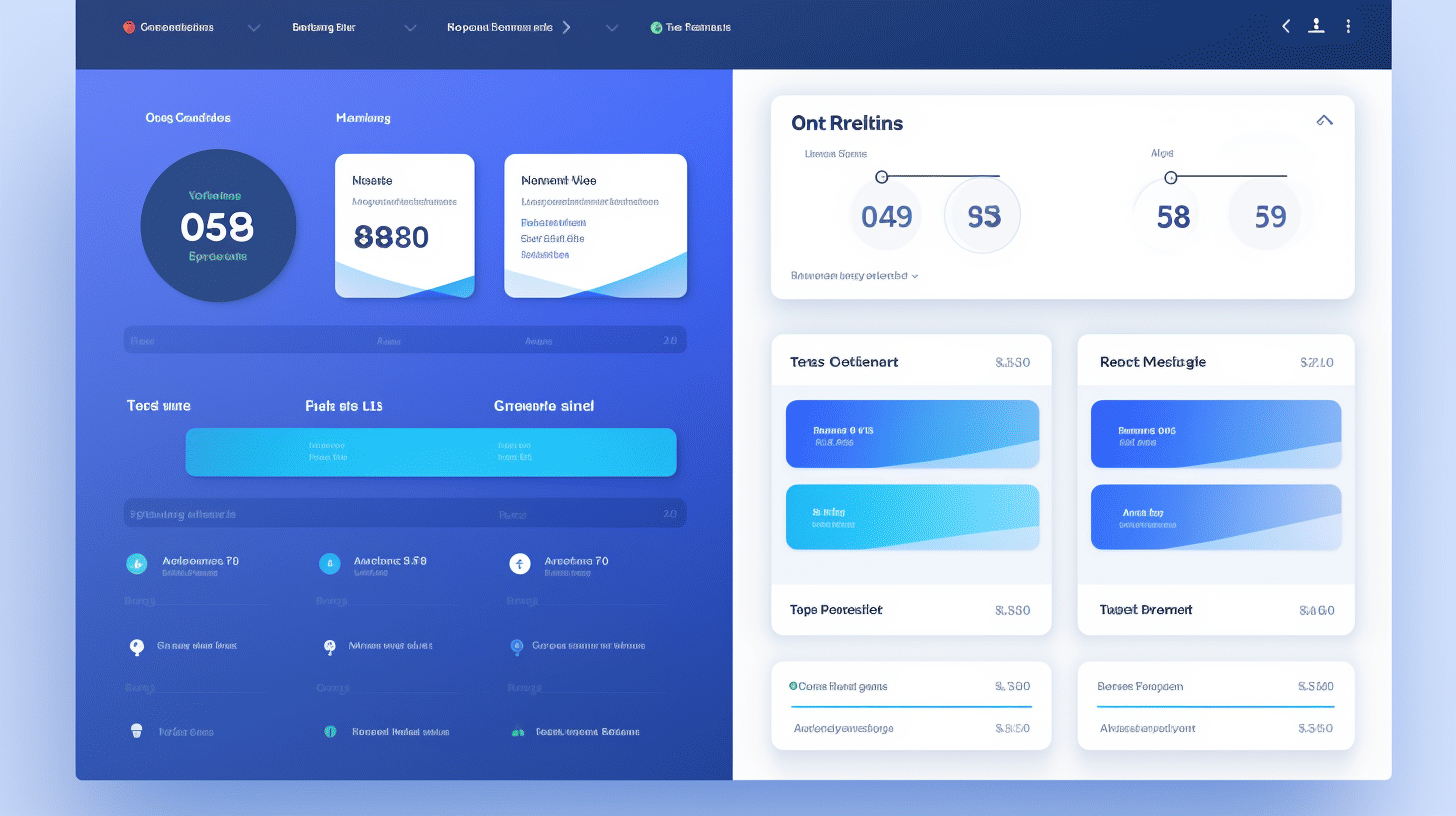在當今快節奏的數位世界中,網站的表現對於其成功至關重要。載入時間緩慢、導航不流暢以及設計無回應都可能導致用戶沮喪並導致高跳出率。對於 WordPress 用戶來說尤其如此,因為該平台為網路上超過 40% 的網站提供支援。因此,如果您是 WordPress 用戶,希望掌握網站效能並提供卓越的用戶體驗,那麼您來對地方了。
在本文中,我們將探討優化 WordPress 網站效能的最佳實務。從選擇正確的託管服務到實施快取技術,我們將涵蓋您需要了解的所有內容,以確保您的網站像一台運作良好的機器一樣運作。透過遵循這些提示和技巧,您將能夠提高網站速度、提高轉換率並為訪客提供出色的瀏覽體驗。
但在我們深入研究 WordPress 效能優化的細節之前,讓我們先來看看一些令人大開眼界的統計數據,這些數據突顯了該平台日益增長的主導地位和全球使用情況。
所以,拿一杯咖啡,戴上你的優化帽,讓我們開始吧! 🚀
WordPress 使用統計
介紹:
WordPress 無疑是世界上最受歡迎的內容管理系統 (CMS) 之一。憑藉其用戶友好的介面、廣泛的自訂選項以及大量的插件和主題,它已成為個人和企業的首選。讓我們深入了解一些有趣的統計數據,以突出 WordPress 的廣泛採用和成長。
WordPress 的市佔率不斷成長
WordPress 在 CMS 市場的主導地位令人印象深刻,其市佔率逐年穩定成長。以下是一些值得注意的統計數據:
- 2023 年,全球 45.8% 網站由 WordPress 提供支持,在知名 CMS 網站中的市佔率為 63.5%[1]。 🌍📈
- 目前,全球共有 14 億個網站,其中使用 WordPress 的有 4.55 億個[2]。這可不是一件小事! 💪
- WordPress 為互聯網上 43.1% 的網站提供支持,自 2020 年以來增長率為 4.5%[3]。這種穩定的成長證明了其持續的受歡迎程度。 🚀📊
- 超過 8.1 億個網站使用 WordPress,佔所有活躍網站的 43.2%[4]。這些數字充分說明了人們對該 CMS 的信任和信心。 🙌
全球 WordPress 使用情況
讓我們探索更多統計數據來說明 WordPress 在世界範圍內的廣泛採用:
- 在排名前 1000 萬的網站中,有 43.2% 是由 WordPress 提供支援的,在 CMS 市場中佔有 65.1% 的市場份額[5]。顯然,WordPress 是高流量網站和各種規模企業的首選。 🥇💼
- 每月有 4.09 億人透過 WordPress 瀏覽超過 200 億個頁面,發布超過 7,000 萬篇文章[6]。這些驚人的活動數字凸顯了 WordPress 作為內容消費和創作平台的規模和影響力。 💻📚
- 2021 年 WordPress 使用量增加了 5%,每月訪客數超過 4 億[7]。這些持續的成長趨勢表明 WordPress 仍在成長,並且沒有放緩的跡象。 📈✨
從這些統計數據可以看出,WordPress 是全球數百萬網站的首選 CMS,它提供了一個強大而靈活的平台來在線上建立、管理和發佈內容。個人、企業甚至知名品牌都依賴 WordPress 來提升其線上形象,這並不奇怪。
因此,無論您是經驗豐富的 WordPress 用戶,還是想要加入 WordPress 愛好者的行列,您都可以確信,選擇這個流行的 CMS 會給您帶來良好的體驗。
[1]: 來源
[2]: 來源
[3]: 來源
[4]: 來源
[5]: 來源
[6]: 來源
[7]: 來源
網站效能的重要性
簡介:
在當今快節奏的數位環境中,網站的表現對於吸引和留住訪客起著至關重要的作用。加載緩慢的網站會讓用戶感到沮喪,從而導致參與度和轉換率下降。另一方面,快速且有效率的網站不僅可以提供更好的使用者體驗,而且對搜尋引擎排名也有正面的影響。在本文中,我們將探討網站效能的重要性以及它如何直接影響您的業務線上成功。
網站速度對轉換率的影響
對網站來說,速度很重要。用戶已經習慣了即時滿足,加載緩慢的網站很快就會讓他們失望。以下是網站速度對您的業務至關重要的原因:
- 增強的使用者體驗: 快速載入的網站可確保使用者能夠無縫瀏覽您的內容。它減少了等待時間和挫折感,從而帶來了積極的用戶體驗。當用戶在您的網站上獲得良好的體驗時,他們更有可能停留更長時間,瀏覽更多頁面,並最終轉化為付費客戶。
- 更高的轉換率: 您是否知道,即使網站速度只有很小的提升也會對轉換率產生重大影響?根據最近的研究,網站速度僅提高 0.1 秒就可以將轉換率提高高達 8%。這意味著透過優化您網站的效能,您可以潛在地提高您的銷售額和收入。
- 提高搜尋引擎排名: 搜尋引擎(例如 Google)將網站速度視為排名因素之一。網站速度慢可能會導致搜尋排名較低,使潛在客戶更難找到您。透過提高網站的效能,您不僅可以為用戶提供更好的體驗,還可以增加在搜尋引擎結果中排名更高的機會。
- 移動響應能力: 在當今的行動驅動世界中,擁有一個能夠在智慧型手機和平板電腦上快速加載的網站至關重要。行動用戶希望即時訪問訊息,如果您的網站加載時間過長,他們很可能會放棄它並轉向您的競爭對手。優化您網站的效能可確保它適合行動裝置並可供更廣泛的受眾存取。
總之,網站效能是任何成功的線上業務的關鍵方面。透過優先考慮速度和優化,您可以提供更好的用戶體驗,提高轉換率,改善搜尋引擎排名,並滿足不斷增長的行動受眾的需求。投資網站效能優化就是對業務成長和成功的投資。
💡 有趣的事實: 您是否知道,亞馬遜發現每增加 100 毫秒的載入時間,銷售額就會減少 1%?這表明,網站速度對於轉換來說有多重要。
WordPress 效能優化的最佳實踐
您是否希望優化您的 WordPress 網站的效能?在當今快節奏的數位世界中,網站速度對於使用者體驗、SEO 排名和整體成功起著至關重要的作用。為了幫助您增強 WordPress 網站的效能,我們編制了一份最佳實踐列表,以提高您網站的速度和回應能力。
選擇可靠的託管服務
選擇良好的託管服務是高效能 WordPress 網站的基礎。可靠的託管服務供應商提供強大的伺服器基礎架構、最佳正常運作時間和高效的支援。以下是選擇託管服務時需要考慮的一些重要提示:
- 尋找專門提供 WordPress 服務的託管服務提供商:針對 WordPress 最佳化的託管確保相容性和更好的效能。
- 評估伺服器回應時間:快速的伺服器回應時間對於快速網站載入至關重要。
- 考慮可擴展性:您的託管服務提供者應提供靈活的計劃,以滿足您不斷增長的網站需求。
- 查看用戶評論:其他使用者的回饋可以讓您了解託管服務提供者的可靠性和效能。
使用高品質主題
您為 WordPress 網站選擇的主題會顯著影響其效能。選擇主題時請考慮以下因素:
- 選擇輕量級主題:具有最少程式碼和優化設計的主題有助於更快地加載您的網站。
- 從值得信賴的來源選擇信譽良好的主題:來自知名開發人員的高級主題更有可能具有乾淨的程式碼和頻繁更新以提高效能。
- 確保響應能力:響應式設計可確保您的網站在不同裝置上無縫運行,從而增強使用者體驗和效能。
優化影像
圖像佔您網站總檔案大小的很大一部分。優化映像對於減少載入時間和提高前端效能至關重要。以下是一些影像優化的最佳實踐:
- 調整影像大小:在將圖像上傳到您的網站之前,請確保其大小已根據顯示要求調整。避免上傳大圖像並使用 CSS 縮小它們。
- 壓縮影像:使用圖像壓縮工具或外掛程式來減小檔案大小而不影響圖像品質。 Smush 和 Imagify 等流行外掛程式可以自動優化您網站上的圖片。
實施快取
快取是一種儲存網站靜態版本的技術,可以減少伺服器負載並提高回應時間。以下是在 WordPress 中實作快取的方法:
- 使用快取插件:安裝快取插件,如 W3 Total Cache 或 WP Super Cache,以產生您網站的靜態 HTML 文件,從而加快載入速度。
- 配置後台任務:啟用後台快取任務以確保您的網站的快取保持最新。
更新並使用最新的 PHP 版本
定期更新您的 WordPress 安裝、主題和外掛程式對於安全性和效能都至關重要。此外,使用最新版本的 PHP 可帶來多種效能優勢。這就是為什麼你應該保持一切最新:
- 增強效能:更新的元件和外掛通常伴隨著錯誤修復、效能改進和程式碼最佳化。
- 安全:舊版可能存在可被利用的安全漏洞。保持所有內容最新有助於保護您的網站免受潛在威脅。
- PHP 效能:升級到最新的 PHP 版本可以顯著提高網站速度。例如,與 PHP 5.6 相比,PHP 7.4 每秒鐘可以處理高達 3 倍的請求。
透過實施這些最佳實踐,您可以增強 WordPress 網站的效能並提供最佳的使用者體驗。要了解有關 WordPress 性能優化的更多信息,請查看 增強 WordPress 效能的綜合指南。立即開始優化您的網站,享受閃電般的 WordPress 網站帶來的好處!
WordPress 效能優化的其他實踐
除了前面提到的最佳實踐之外,您還可以採用其他幾種技術來進一步優化 WordPress 網站的效能。這些額外的做法可以提高您的網站速度,改善用戶體驗,並提升您的搜尋引擎排名。讓我們仔細看看其中一些有效的策略:
將評論分成幾頁
如果您的 WordPress 網站收到大量關於您的部落格文章的評論,最好將它們分成幾頁。不要一次加載所有評論,因為這樣會減慢頁面加載時間,而是將評論分成幾頁,這樣用戶可以更輕鬆地閱讀評論。
預設情況下,WordPress 在單一頁面上顯示所有評論,但您可以變更此設定以每頁顯示特定數量的評論。這有助於提高您網站的整體速度並防止您的頁面變得過長和混亂。
啟用 GZIP 壓縮
GZIP 壓縮是一種在將網站資源(例如 HTML、CSS 和 JavaScript 檔案)傳送到使用者瀏覽器之前減小其檔案大小的技術。啟用 GZIP 壓縮可以顯著減少需要傳輸的資料量,從而加快頁面載入時間。
要在 WordPress 中啟用 GZIP 壓縮,您可以修改伺服器的設定文件,也可以使用類似 GZip Ninja 速度優化。只需點擊幾下,該外掛程式即可自動為您的網站啟用 GZIP 壓縮,無需任何技術知識。
利用內容傳遞網路 (CDN)
內容傳遞網路 (CDN) 是位於不同地理位置的伺服器網路。當使用者造訪您的網站時,CDN 會從距離使用者最近的伺服器提供靜態檔案(如圖片、CSS 和 JavaScript),從而減少資料需要傳輸的距離,從而縮短頁面載入時間。
透過將 CDN 與您的 WordPress 網站集成,您可以在全球多個伺服器上分發您網站的內容,確保無論用戶身在何處都能快速可靠地交付內容。熱門的 CDN 服務包括 雲耀 和 最大CDN,兩者都可以輕鬆與 WordPress 整合。
縮小 CSS 和 JavaScript
壓縮 CSS 和 JavaScript 檔案包括刪除不必要的字符,例如空格、註釋和換行符,但不影響程式碼的功能。此過程可減少檔案大小,從而加快網站的載入時間。
WordPress 有各種外掛可以自動縮小您的 CSS 和 JavaScript 檔案。一個這樣的流行插件是 自動最佳化,它不僅可以縮小您的文件,還可以快取和合併它們以獲得最佳效能。
透過實施這些額外的 WordPress 效能優化實踐,您可以進一步提高網站的速度和效率,讓訪客和搜尋引擎都更加滿意。利用這些策略為您的 WordPress 網站創建無縫且快速的使用者體驗。
常見問題解答
- 有哪些最佳做法可以提高 WordPress 使用者的網站效能?
一些提高 WordPress 使用者網站效能的最佳實踐包括優化圖片、使用快取外掛程式、最小化 CSS 和 JavaScript 檔案、使用內容分發網路 (CDN) 以及定期更新 WordPress 和外掛程式。
- 為什麼網站效能很重要?
網站效能很重要,因為它直接影響用戶體驗、轉換率和搜尋引擎排名。快速載入的網站可以提供更好的使用者體驗,保持訪客的參與度,並有助於實現業務目標。
- 如何優化 WordPress 網站上的圖片?
您可以透過將圖片調整為正確的尺寸來優化 WordPress 網站上的圖片,使用 Smush 或 EWWW Image Optimizer 等工具壓縮圖片而不損失質量,並延遲加載圖片以確保僅在需要時加載。
- 什麼是快取插件以及它如何幫助提高網站效能?
快取外掛程式會建立您的網站頁面的靜態 HTML 版本並將其儲存在伺服器上。當訪客請求頁面時,將提供快取版本,從而無需動態處理。這加快了頁面載入時間並減少了伺服器負載。
- 我是否應該定期更新 WordPress 和外掛程式以獲得更好的效能?
是的,定期更新 WordPress 核心和外掛程式對於維護網站效能和安全性至關重要。更新通常包括錯誤修復、效能改進和安全補丁,確保您的網站順利運作並受到保護。



















